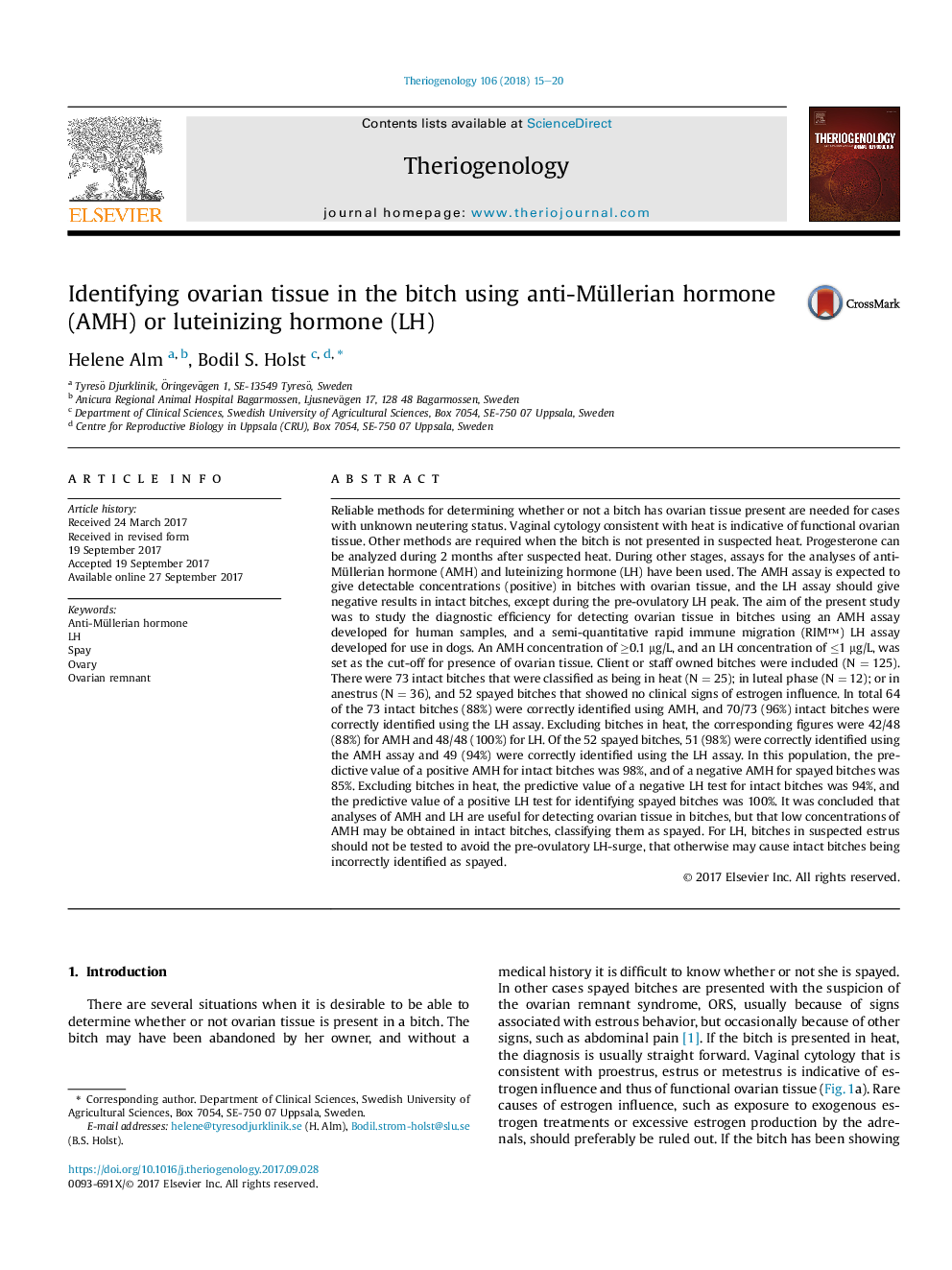| Article ID | Journal | Published Year | Pages | File Type |
|---|---|---|---|---|
| 5522887 | Theriogenology | 2018 | 6 Pages |
â¢Assays for AMH and LH may be used for determining presence of ovarian tissue in the bitch.â¢Sensitivity for detecting intact bitches, excluding bitches in heat, was higher with the LH assay than with the AMH assay.â¢Specificity for detecting spayed bitches was higher with the AMH assay than with the LH assay.
Reliable methods for determining whether or not a bitch has ovarian tissue present are needed for cases with unknown neutering status. Vaginal cytology consistent with heat is indicative of functional ovarian tissue. Other methods are required when the bitch is not presented in suspected heat. Progesterone can be analyzed during 2 months after suspected heat. During other stages, assays for the analyses of anti-Müllerian hormone (AMH) and luteinizing hormone (LH) have been used. The AMH assay is expected to give detectable concentrations (positive) in bitches with ovarian tissue, and the LH assay should give negative results in intact bitches, except during the pre-ovulatory LH peak. The aim of the present study was to study the diagnostic efficiency for detecting ovarian tissue in bitches using an AMH assay developed for human samples, and a semi-quantitative rapid immune migration (RIMâ¢) LH assay developed for use in dogs. An AMH concentration of â¥0.1 μg/L, and an LH concentration of â¤1 μg/L, was set as the cut-off for presence of ovarian tissue. Client or staff owned bitches were included (N = 125). There were 73 intact bitches that were classified as being in heat (N = 25); in luteal phase (N = 12); or in anestrus (N = 36), and 52 spayed bitches that showed no clinical signs of estrogen influence. In total 64 of the 73 intact bitches (88%) were correctly identified using AMH, and 70/73 (96%) intact bitches were correctly identified using the LH assay. Excluding bitches in heat, the corresponding figures were 42/48 (88%) for AMH and 48/48 (100%) for LH. Of the 52 spayed bitches, 51 (98%) were correctly identified using the AMH assay and 49 (94%) were correctly identified using the LH assay. In this population, the predictive value of a positive AMH for intact bitches was 98%, and of a negative AMH for spayed bitches was 85%. Excluding bitches in heat, the predictive value of a negative LH test for intact bitches was 94%, and the predictive value of a positive LH test for identifying spayed bitches was 100%. It was concluded that analyses of AMH and LH are useful for detecting ovarian tissue in bitches, but that low concentrations of AMH may be obtained in intact bitches, classifying them as spayed. For LH, bitches in suspected estrus should not be tested to avoid the pre-ovulatory LH-surge, that otherwise may cause intact bitches being incorrectly identified as spayed.
